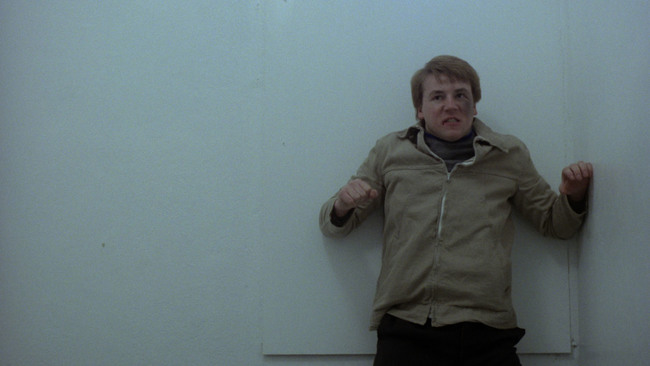Alan Clarke’s Scum

With Kino Lorber’s new restoration opening at the Metrograph in New York tomorrow, where it’ll be screening through Wednesday, and then playing at Cinefamily in Los Angeles from July 7 through 13, we begin with Alan Scherstuhl in the Village Voice: “Alan Clarke’s once-banned, twice-filmed Brit scandal, Scum [1979], stands as one of the great films about boys and violence, about the allure and horror and inevitability of young toughs seizing power by smashing some skulls—and replicating, in their own private hellscape, the societal structures that have ground them down.”
Writing for Artforum,Andrew Hultkrans notes that Scum is “set in a ‘borstal’—somewhere between a reform school and a juvenile detention center—populated by the type of irredeemable, heavily accented delinquents Morrissey romanticized in songs like ‘Suedehead’ and ‘Last of the Famous International Playboys,’ rakish street hoods with hidden (or merely imagined) sensitive streaks. But there is no glamour here, even of a roughneck or rough trade variety (it is far from Genet), and boys who evince any kind of vulnerability tend to commit suicide, in one case, after being gang-raped.”
Cosmo Bjorkenheim at Screen Slate: “Scum was made the ‘year punk exploded’—with the release of Suicide’s debut album, The Voidoids’ Blank Generation, and Dead Boys’ Young Loud and Snotty, among many others—and much of the same nihilism and social alienation is evident in it.”
Last month at the Quietus, Adam Scovell looked into the decision by the BBC to pull the plug on the original 1977 teleplay. And last year, Michael Pattison wrote an Alan Clarke primer for the BFI.
Update, 6/16: You’ll find more reviews of Scum gathered at Critics Round Up.
Update, 6/17: “Scum is reminiscent of the careful formalism and de-dramatization of A Man Escaped (1956),” writes Tanner Tafelski for Kinoscope. “Clarke’s rigid, harsh compositions evoke the sense of claustrophobia with characters hemmed in by geometric lines in the mise-en-scène. Clarke had been honing this terse style ever since working with historian Tony Parker—author of such works on criminals and criminal life as The Courage of His Convictions (1962) and The Frying Pan: A Prison and its Prisoners (1970)—on A Life is For Ever (1972), another film set in a prison. Parker suggested an understated, barebones look that was accompanied by only diegetic sound. Clarke proceeded to adopt such an aesthetic for subsequent works, including Scum, which functions as a transitional film in his body of work.”
For news and items of interest throughout the day, every day, follow @CriterionDaily.



